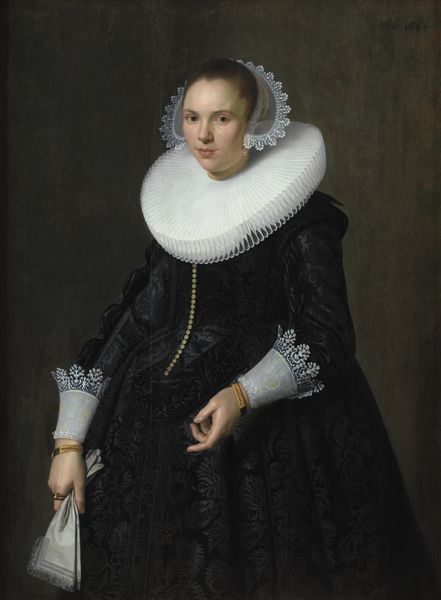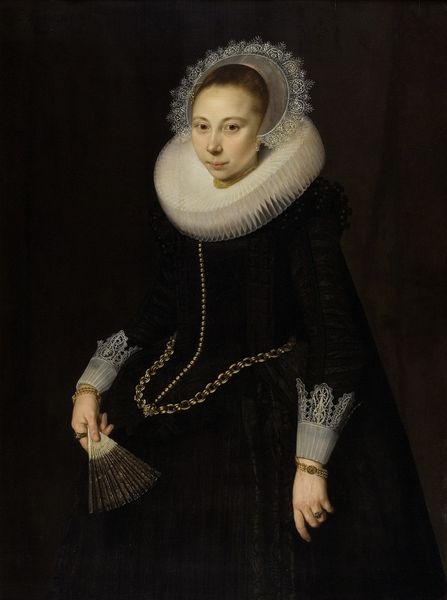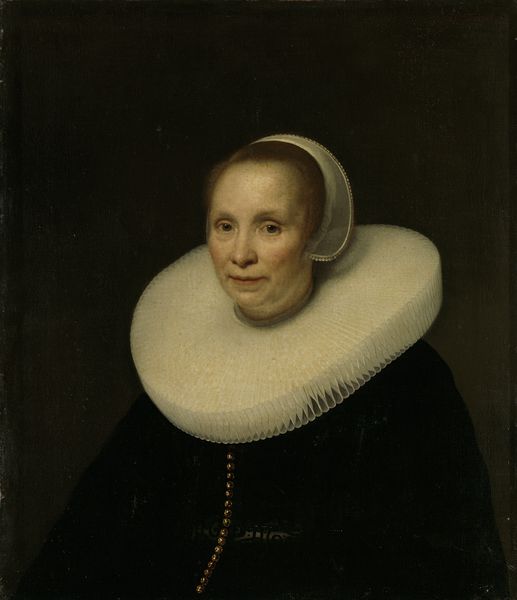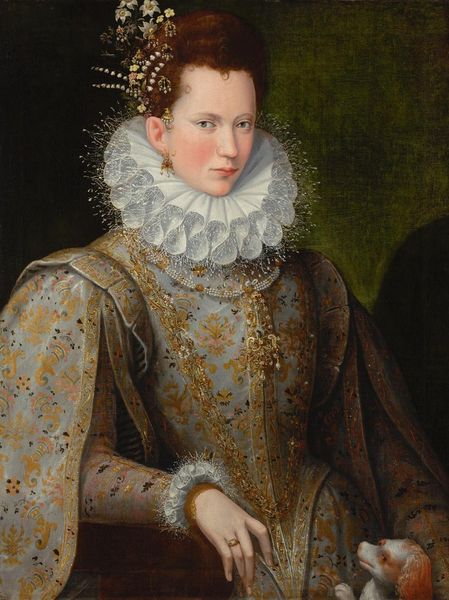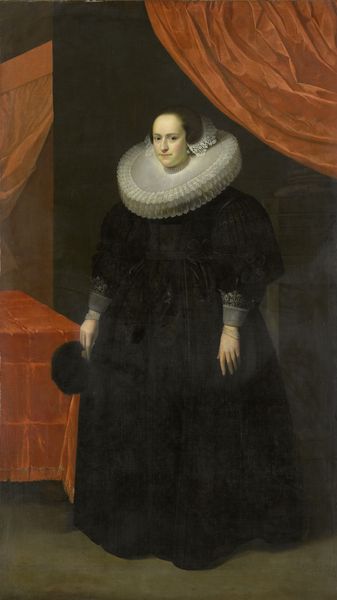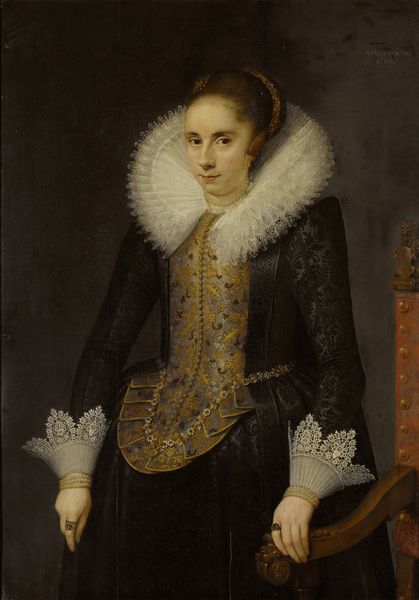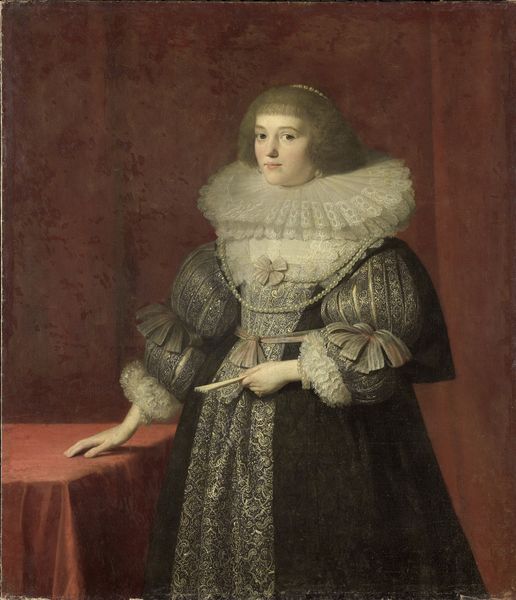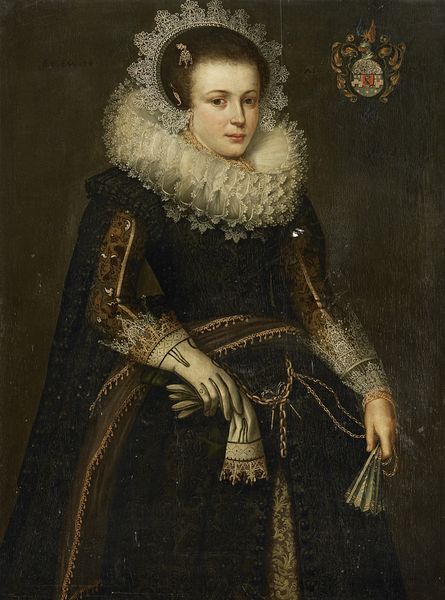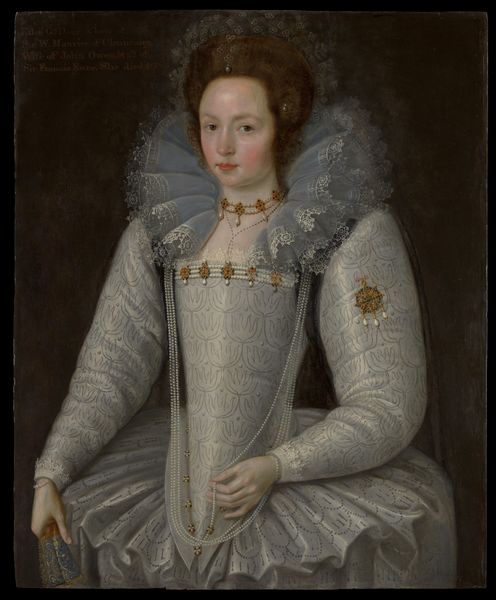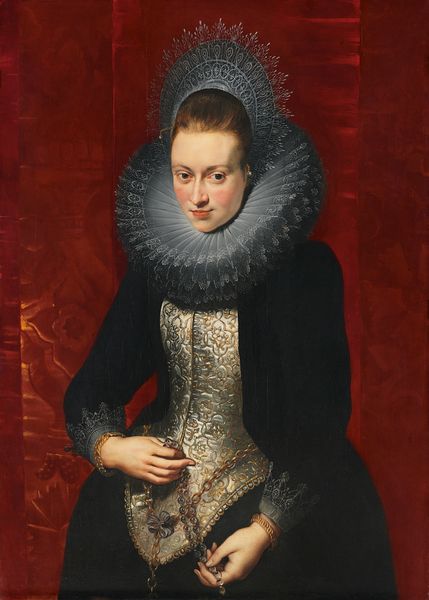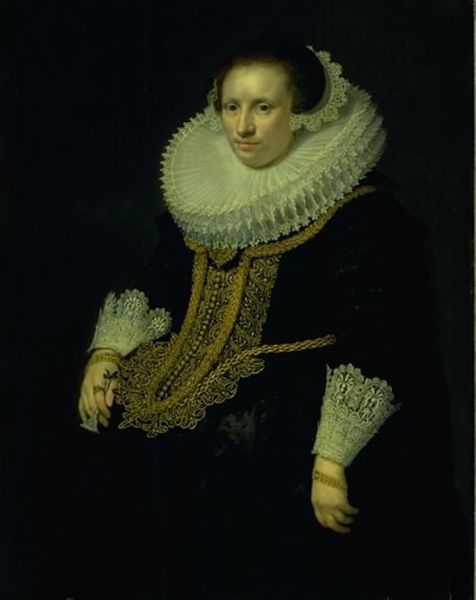
Dimensions: 122.5 x 90.4 x min. 0.5 cm
Copyright: Public Domain
Curator: Let's look at this "Portrait of a Woman" from 1636. The artist is currently unknown, and it's rendered with oil paint. What grabs your attention about this piece? Editor: It's very dark. All that black fabric! It must have taken ages to paint all of those folds and shadows. I’m curious how much a dress like that would have cost, or how much labor was needed to create the lace details on her collar and cuffs. What does that say about who she was? Curator: Precisely! Think about the raw materials: where did that black dye come from? The deepness of the shade indicates wealth. How skilled would a lacemaker need to be to create those delicate edges? Then, the cost of her pearls – this is more than just an image; it’s a snapshot of a complex economic system. Can you see the weight of social expectations resting on her shoulders through the use of material excess? Editor: Absolutely! I never thought about portraiture in those terms before. It’s not just about representing the person, but also representing their material possessions and what it took to acquire them. Would ordinary people have even had access to images like this, or materials this high of quality? Curator: Certainly, prints could have circulated, popularizing a more democratic access to imagery, but likely without all the nuanced information about production. Are we really seeing an individual here, or more of a billboard of status bought, and likely worn, at a certain cost to the various producers of this imagery? Editor: I guess it's both, isn't it? Seeing it from that angle is… enlightening, and perhaps unsettling, but that's exactly why it's so intriguing! Curator: Exactly, the consumption on display can hint at so many relationships across class, place, and labor.
Comments
No comments
Be the first to comment and join the conversation on the ultimate creative platform.
